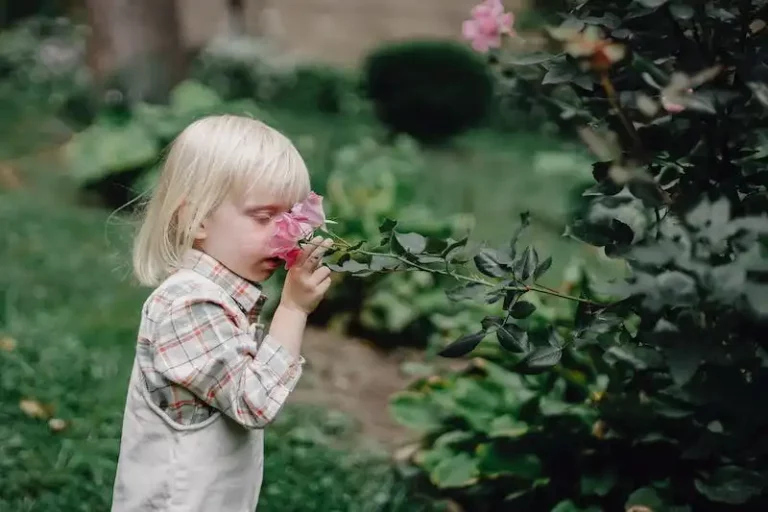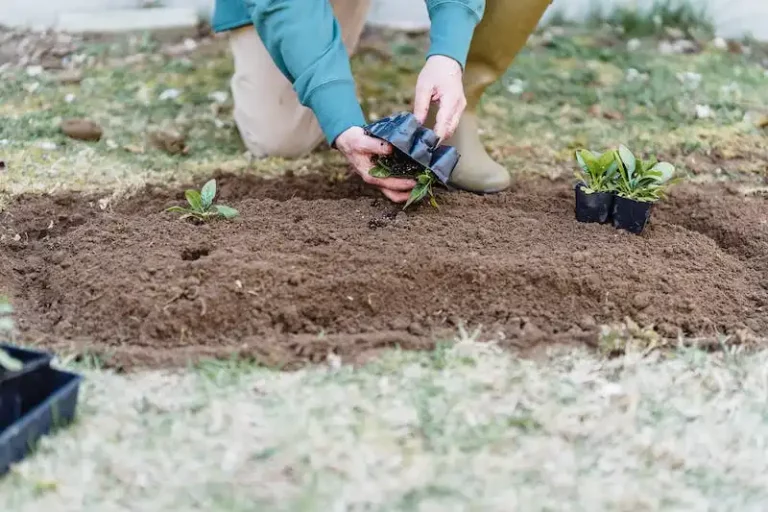The pumpkin flower is a beautiful and vibrant bloom that is much loved for its bright orange color and delicate petals. Pumpkins are known for producing large vines and their flowers are a key reason for this. Unlike many other plants, the pumpkin plant produces both male and female flowers on the same plant. Their flowers bloom for a short period of time and are a delight to see, but they also serve an important purpose in the plant’s reproductive cycle.
Pollination is an important issue when it comes to pumpkin flowers. The male flowers produce pollen, while the female flowers have the ovaries that will eventually turn into pumpkins. For the female flowers to produce fruit, they need to be pollinated. If the flowers are not pollinated, they will not produce pumpkins. Typically, the male flowers appear first, followed by the female flowers about a week or so later. This allows enough time for the bees and other pollinators to do their job and ensure successful pollination.
However, weather conditions can sometimes be a challenge when it comes to pumpkin flower pollination. Excessive heat or rain can affect the blooming and pollination process. If the weather is too hot, the flowers may wilt and not bloom properly. On the other hand, heavy rain can wash away the pollen, making it difficult for the flowers to be pollinated. In both cases, the chances of fruiting are reduced.
To ensure successful fruiting, it is important to provide the pumpkin flowers with the right growing conditions. The soil should be well-drained and rich in nutrients, especially nitrogen. The plants also need an adequate water supply, particularly during dry periods. While pumpkin plants are known for their large vines, it is important to avoid overly crowded growing areas as this can lead to poor air circulation and increase the chances of fungal diseases.
In summary, pumpkin flowers play a crucial role in the production of pumpkins. Proper pollination is necessary for fruit production, and weather conditions can impact this process. By providing the right growing conditions and ensuring proper pollination, you can increase your chances of a bountiful pumpkin harvest.
5 Reasons Why Your Pumpkin Isn’t Producing Fruit
If your pumpkin plants have been growing for a while and they still haven’t produced any fruits, there are several reasons why this might be the case. Understanding these reasons can help you address the issue and get your pumpkins growing healthy and producing fruit in no time.
1. Lack of pollination
Pumpkin flowers need to be pollinated in order for fruit to develop. If there are not enough bees or other pollinators in your area, the chances of your pumpkins fruiting are lower. One way to encourage pollination is by planting flowers that attract pollinators near your pumpkin plants.
2. Male flowers
If your pumpkin plants are producing a lot of flowers but no fruit, it’s probably because the majority of the flowers are male. Male flowers do not have ovaries and therefore cannot produce fruit. You can easily tell male flowers from female flowers by looking at the base of the flower. Male flowers have a thin stem, while female flowers have a small, immature fruit at the base.
3. Lack of nutrient or water
Pumpkins have high nutrient and water needs. If your plants are not getting enough nitrogen, phosphorus, or potassium, it can affect their fruit production. Similarly, if the soil is too dry or the weather is too hot, the plants may not be able to set fruits. Make sure to provide your plants with adequate nutrients and keep the soil moist to promote fruiting.
4. Drought before pollination
In some areas, drought conditions can occur during the crucial time of pumpkin pollination. If the plants do not receive enough water during this window, the flowers may not set fruit. To prevent this, make sure to water your plants regularly, especially during dry spells.
5. Not enough growing time
Pumpkins take time to grow and develop fruits. If your plants haven’t had enough time to mature, it’s possible that they are still in the flowering stage and have not yet started producing fruits. Give them some more time, and you may soon see the fruits of your labor.
Why Isn’t My Pumpkin Fruiting
One common reason for pumpkins not fruiting is a lack of pollination. Pumpkins have separate male and female flowers, and they need to be pollinated to produce fruit. If you are seeing a lot of blooms but no fruit, it is probably because the flowers are not being pollinated.
Pumpkin flowers only open for a short window of time, usually just one day. If the weather is too cold or rainy during this time, the bees and other pollinators may not be active, and the flowers may not get pollinated.
If you do not have enough pollinators in your garden, there are a few things you can do to increase your chances of pollination. One option is to hand-pollinate the flowers yourself. To do this, simply take a male flower and remove the petals to expose the pollen-producing stamen. Then, transfer the pollen to the female flower by gently rubbing the stamen against the stigma.
Another reason why your pumpkins may not be fruiting is that the plants are not healthy. Pumpkins need a lot of sun, so if they are not getting enough light, they may not produce fruit. Additionally, pumpkins are heavy feeders and require a lot of nutrients, particularly nitrogen. If the soil is lacking in nitrogen, the plants may not be able to support fruit production.
Excessive heat can also prevent pumpkins from fruiting. If temperatures are consistently above 90°F (32°C), the plants may drop their flowers and not set fruit. On the other hand, drought conditions can also be a problem. Pumpkins need consistent moisture, particularly when they are producing fruit. If the soil is too dry, the plants may not be able to develop healthy ovaries and produce pumpkins.
So, if your pumpkins are not fruiting, take a look at the conditions they are growing in. Make sure they are in a sunny location with well-draining soil and that they are receiving enough water. If you are still having issues, there may be other factors at play, such as pests or diseases. It is always a good idea to consult a local gardening expert or extension service for further assistance.
- Reasons why your pumpkins may not be fruiting:
- Lack of pollination
- Unfavorable weather conditions
- Unhealthy plants
- Excessive heat or drought
By addressing these factors, you can help ensure that your pumpkin plants are happy and productive, and that you’ll have a bountiful harvest of delicious pumpkins.
1 No Pollination
Pumpkin plants, like many other members of the Cucurbitaceae family, have separate male and female flowers. The male flowers produce excessive amounts of pollen, while the females have large ovaries that, when pollinated, eventually develop into fruit.
There are several reasons why pollination may not occur in your pumpkin plants. One of the most common reasons is that there are not enough pollinators, like bees, to transfer pollen from the male flowers to the females. In some areas, you may have decided to grow your pumpkins in conditions that are not favorable for pollinators, such as areas with drought or excessive heat.
An additional reason for no pollination could be that the male flowers are producing too much pollen, overwhelming the available pollinators. Alternatively, the females may not be producing enough receptive ovaries or are not opening their flowers at the right time for pollination to occur.
If you have observed no pollination in your pumpkin plants, there are a few things you can do to encourage pollination. Firstly, you can try to attract more pollinators by planting flowers that they are attracted to, such as orange flowers. Additionally, you can hand-pollinate the female flowers by using a small brush or q-tip to transfer pollen from the male flowers to the female flowers.
It is also important to ensure that your pumpkin plants are growing in healthy conditions. They need sufficient water, nitrogen, and sunlight to thrive. If the vines are overly crowded or the plants are under stress due to drought or heat, they may not produce enough flowers or develop fruits.
In summary, no pollination in pumpkin plants can occur due to a lack of pollinators, overly productive male flowers, insufficient receptive ovaries in the females, or unhealthy growing conditions. By addressing these factors, you can increase the chances of successful pollination and fruiting in your pumpkin plants.
2 Too Much Heat
One of the reasons why your pumpkin flowers may not be fruiting is due to excessive heat. Pumpkins prefer temperatures between 65°F and 85°F (18°C and 29°C) for optimal fruit production. When the weather is too hot, it can negatively affect the plant’s ability to produce fruit.
High temperatures can cause the female flowers to drop off before they have a chance to develop into a fruit. The excessive heat can also prevent the transfer of pollen from the male flowers to the female flowers, resulting in poor pollination. Without proper pollination, the fruit will not develop, and you will not see any pumpkins growing on your vines.
If you’ve been experiencing hot weather and your pumpkin plants aren’t producing fruit, there are a few things you can do to help mitigate the issue:
1. Provide Shade
If your pumpkin plants are growing in an area with full sun exposure, consider providing temporary shade for them during the hottest part of the day. This can be done by creating a shade cloth screen or by placing a large umbrella or piece of cardboard over the plants.
2. Water Properly
During periods of excessive heat, it’s important to make sure your pumpkin plants are receiving enough moisture. Water them deeply and regularly to keep the soil moist. However, be cautious not to overwater as this can lead to other issues such as root rot.
Remember that pumpkin plants are heavy water consumers and may require additional water during drought conditions.
3. Keep an Eye on the Weather
Check the weather forecast regularly to anticipate any excessive heat spells. If you know that a particularly hot week is predicted, you can take precautionary measures to protect your plants from the heat.
In addition to the above steps, it’s important to note that extreme heat can also affect the viability and production of pollen. If the male flowers are not producing as much pollen due to the heat, it can impact the pollination process.
Too much heat is not the only reason why your pumpkin flowers may not be fruiting, but it is one of the common issues in areas with overly hot conditions. By taking some of these precautions, you can increase the chances of your pumpkin plants successfully producing fruit.
| Male Flowers | Female Flowers |
|---|---|
| Male flowers have long stems with a thin base and are usually smaller in size compared to female flowers. They do not develop into fruit. | Female flowers have a short stem attached to the base of the flower, which resembles a tiny, undeveloped pumpkin. These flowers have the potential to develop into fruit if properly pollinated. |



